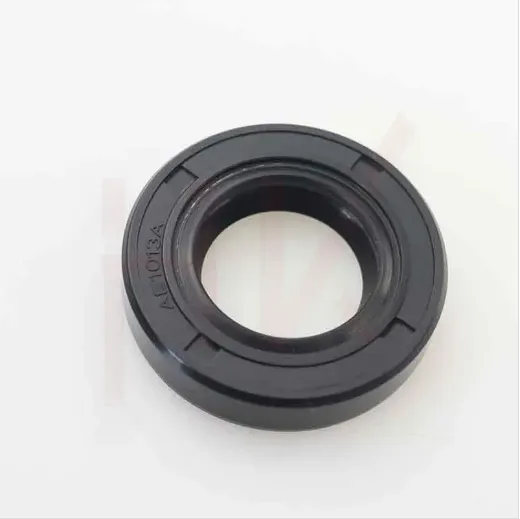Dec . 23, 2024 09:04 Back to list
hydraulic cylinder wiper seal
Understanding Hydraulic Cylinder Wiper Seals A Critical Component for Performance and Longevity
Hydraulic systems are integral to a myriad of applications, from heavy machinery in construction to precision equipment in manufacturing. At the heart of these systems lies the hydraulic cylinder, a device that converts hydraulic energy into mechanical energy. While the design and function of hydraulic cylinders receive significant attention, one component often overlooked is the wiper seal. This unassuming part plays a crucial role in ensuring the efficiency and longevity of hydraulic systems.
What is a Hydraulic Cylinder Wiper Seal?
A hydraulic cylinder wiper seal is a type of seal located at the outermost part of the cylinder, specifically at the rod entrance. Its primary function is to prevent contaminants from entering the hydraulic system while also keeping hydraulic fluid from leaking out. The wiper seal is engineered to withstand extreme pressure conditions and harsh environmental factors, making it a vital component in the overall hydraulic design.
Functions of Wiper Seals
1. Contamination Prevention In hydraulic systems, dirt, dust, and other contaminants can lead to severe wear and damage to internal components. The wiper seal used in hydraulic cylinders serves as a barrier, effectively keeping these harmful particles out of the hydraulic fluid, thus ensuring proper functioning and extending equipment life.
2. Fluid Retention Although it primarily acts as a barrier to foreign material, a wiper seal also plays a role in minimizing hydraulic fluid leakage. Effective sealing prevents the loss of hydraulic fluid, contributing to the overall efficiency of the system. This is particularly important in systems where fluid levels must be maintained for optimal performance.
3. Temperature Resistance Hydraulic systems often operate under high temperatures due to friction and flow resistance. Wiper seals are designed with materials that can withstand these conditions without degrading, ensuring they maintain their integrity and functionality over time.
4. Dynamic Performance When the hydraulic cylinder rod extends and retracts, the wiper seal must remain effective under dynamic conditions. The design and material composition of the wiper seal facilitate smooth operation without generating excessive wear, contributing to the overall efficiency and reliability of the hydraulic system.
Material Selection for Wiper Seals
hydraulic cylinder wiper seal

The performance of a wiper seal largely depends on the materials used in its construction. Common materials include nitrile rubber (NBR), fluorocarbon rubber (FKM), and polyurethane. Each of these materials offers unique properties suitable for different environmental conditions. For instance, NBR is favored for its excellent resistance to oils and lubricants, while FKM provides superior thermal stability and chemical resistance. Polyurethane seals are known for their strength and abrasion resistance. The choice of material is critical and must be aligned with the specific application requirements, including temperature ranges and exposure to chemicals.
Maintenance Tips
To ensure the longevity of hydraulic cylinder wiper seals, regular maintenance is essential. Here are some tips to keep in mind
- Regular Inspections Frequent checks for wear, damage, and contamination can help identify potential issues before they escalate.
- Clean Surrounding Areas Keeping the environment around the hydraulic cylinders clean can reduce the ingress of dirt and debris, easing the burden on the wiper seals.
- Fluid Quality Using high-quality hydraulic fluid can minimize the risk of seal deterioration. Contaminated fluid can lead to rapid wear of the wiper seals and other components.
- Proper Installation Ensuring that wiper seals are installed correctly is crucial. Misalignment or improper fitting can lead to premature failure.
Conclusion
Hydraulic cylinder wiper seals are a small but vital component of hydraulic systems. Understanding their functions and significance can help operators maintain equipment more effectively and enhance the overall efficiency and reliability of hydraulic machinery. By ensuring proper material selection and regular maintenance checks, businesses can minimize downtime and prolong the life of their hydraulic systems, ultimately leading to lower operational costs and increased productivity.
-
TCN Oil Seal Metal Ring Reinforcement for Heavy Machinery
NewsJul.25,2025
-
Rotary Lip Seal Spring-Loaded Design for High-Speed Applications
NewsJul.25,2025
-
Hydraulic Cylinder Seals Polyurethane Material for High-Impact Jobs
NewsJul.25,2025
-
High Pressure Oil Seal Polyurethane Coating Wear Resistance
NewsJul.25,2025
-
Dust Proof Seal Double Lip Design for Construction Equipment
NewsJul.25,2025
-
Hub Seal Polyurethane Wear Resistance in Agricultural Vehicles
NewsJul.25,2025
-
The Trans-formative Journey of Wheel Hub Oil Seals
NewsJun.06,2025
Products categories
















